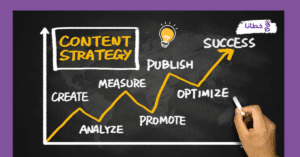table of contents
In the fast-paced world of digital marketing, paid search advertising has become an indispensable tool for any successful marketing strategy. These ads allow you to reach a targeted audience in a targeted and effective manner, enabling you to achieve your marketing goals efficiently and at the lowest possible cost. In this article, you’ll discover how to leverage your marketing budget to implement paid search advertising campaigns that deliver maximum benefits.
What are paid ads?
Paid advertising is a type of advertising that is displayed on search engines or various websites in exchange for a fee. There are several types of paid advertising:
1- Search Engine Ads:
- These ads appear above or on the sides of search results in search engines like Google, Bing, or Yahoo.
- These ads are targeted based on the keywords users search for.
2- Display Ads:
- These ads appear on various websites in the form of banners or ad units.
- Users are targeted based on their online behaviors and preferences.
3- Social Media Ads:
- These ads appear on social media platforms such as Facebook, Instagram, Twitter, and LinkedIn.
- Users are targeted based on profile data and behaviors on these platforms.
4- Video Ads:
- These ads appear before or during videos on platforms like YouTube or Vimeo.
- Users can be targeted based on their video preferences and behaviors.
Paid advertising enables advertisers to reach a precisely defined audience and accurately measure the effectiveness of advertising campaigns. Budgets can be customized and targeting parameters controlled to achieve optimal results. Read: How to Use Video to Promote Your Brand.
What is the difference between SEO and SEM?
1- SEO (Search Engine Optimization):
- SEO is a set of practices and strategies aimed at improving a website’s ranking in organic (non-paid) search results on search engines such as Google, Bing, Yahoo, and others.
- SEO focuses on improving website content and technical structure to improve discoverability and ranking in search engines.
- SEO efforts focus on improving user experience, relevance, speed, objectivity, and trust.
- The goal is to appear in the top ranks of organic results without paying any fees.
Read more: 10 Effective SEO Strategies.
2- SEM (Search Engine Marketing):
- SEM focuses on ads that appear at the top or sides of search results in exchange for payment based on clicks or views.
- SEM efforts focus on targeting the right keywords, optimal pricing, and advanced analytics.
- The goal of SEM is to instantly appear in paid search results to reach a targeted audience.
- SEM is the use of paid advertising on search engines to appear in sponsored search results.
In general, SEO is a long-term effort to improve organic rankings, while SEM is a short-term effort to appear in paid results. The two strategies are often used together to achieve the best results.
The importance of paid advertising on search engines:
Paid search advertising is a powerful tool for driving more views and targeted traffic to your website. These ads appear when search for keywords related to your products or services, increasing your chances of reaching potential customers at the moment they’re ready to engage with your offerings. Additionally, you can precisely target the right audience using advanced search engine targeting tools, increasing the efficiency of your advertising campaigns and reducing costs.
Allocating marketing budget for paid advertising:
To make the most of your marketing budget, you should allocate a reasonable portion of it to paid search advertising. The first step is to clearly define your marketing goals and target audience, then develop a plan to allocate your budget across various paid advertising channels, such as search, network, video, and mobile marketing. It’s also important to continuously monitor the performance of your advertising campaigns and make necessary improvements to ensure maximum return on investment.
Strategies to improve the effectiveness of paid advertising:

To increase the effectiveness of paid search advertising, there are several strategies you can follow:
- Measure and analyze campaign performance: Regularly monitor your campaign’s key performance indicators, such as click-through rate, cost per click, and conversions, and use this data to make necessary improvements.
- Improve audience targeting: Use advanced targeting tools to identify the audience most relevant to your offers, such as geography, demographics, interests, and behavior.
- Improve your site’s user experience: Ensure that the landing pages users reach through ads provide a seamless experience that’s relevant to the ad content.
- Optimize your ad text and design: Make an effort to craft your ad text attractively and effectively, and use a distinctive design that grabs users’ attention.
Case Study: E-commerce Company’s Success Using Paid Advertising
Innovative e-Commerce offers a variety of products across various sectors. To reach a wider audience and increase sales, the company allocated 30% of its marketing budget to paid search engine advertising. After carefully studying its target audience and refining its advertising strategy, the company achieved a 45% increase in website traffic and a 35% increase in sales in the first six months. This success encouraged the company to allocate more budget to paid advertising in the following years.
Case study analysis:
1- Use paid advertising:
- Paid advertising includes ads on search engines, social platforms, and ad networks.
- The e-commerce company used paid advertising as part of its marketing strategy.
- These ads are precisely targeted to reach your target audience.
2- Success in advertising campaigns:
- Paid advertising campaigns have proven successful in increasing traffic to a company’s website.
- High conversion rate resulting in significant sales growth.
- This was reflected in increased traffic and online sales.
3- Targeting and measurement strategy:
- The company relied on tracking key performance indicators (KPIs) such as cost per click, click-through rate, and conversion rate.
- Campaign performance was measured frequently and data was used to improve strategy and advertising.
- The company used customer data and advanced analytics to precisely define its target audience.
4- Success results:
- Achieve positive ROI from paid advertising campaigns.
- Enhance the company’s competitiveness in the online market.
- The company’s market share is higher than that of competitors.
- Significantly increase online sales volume.
Overall, this study is a successful case study in using paid advertising to boost an e-commerce company’s performance. Precise targeting and continuous measurement of results were key factors in this success. Khutana is a leading digital marketing and search engine optimization company.
How can I create a paid advertising campaign on search engines?
There are several steps to creating a successful paid search engine advertising campaign:
1- Search for the correct keywords and phrases:
- Use keyword research tools to identify the most popular and relevant words for your products or services.
- Analyze data to identify the best-performing and most cost-effective keywords.
2- Create customized and attractive ads:
- Craft an interesting ad description title that is relevant to your target keywords.
- Make sure the ad provides value to users and takes them to a relevant landing page.
- Use attractive images or videos to grab users’ attention.
3- Adjust ad targeting:
- Narrow your targeting to demographics and interests relevant to potential customers.
- Use advanced targeting features like location, device, and time of day.
- Target the right geographic areas for your business.
4- Budget management and analysis:
- Use performance data to improve ad targeting and optimize ROI.
- Continuously monitor campaign performance and adjust the strategy as necessary.
- Determine an appropriate and scalable advertising budget.
5- Test and repeat:
- Try different changes to your ads and targeting and monitor the results.
- Repeat successful processes and eliminate ineffective options.
- Continue to continuously improve your campaign to achieve the best results.
With these steps, you’ll be able to create an effective paid search advertising campaign that achieves your marketing goals. In today’s competitive digital marketing environment, paid search advertising has become an indispensable tool for achieving your marketing goals efficiently and effectively. By allocating an appropriate portion of your marketing budget to these ads and implementing appropriate optimization strategies, you can make the most of this powerful tool to attract more targeted customers and increase your sales.
Questions about the article: How to Use Paid Search Engine Advertising to Boost Your Digital Marketing Success
What is paid search marketing?
What is an example of PPC?
Is PPC better than SEO?
If your goal is to drive traffic to your website in the short term, you might choose to focus on pay-per-click advertising. If you want to strengthen your business’s online presence in the long term, search engine optimization is the solution. Instead, invest your time and energy in both search engine optimization and pay-per-click advertising for a comprehensive strategy.
We respect and value your time... half an hour to grow your project
































